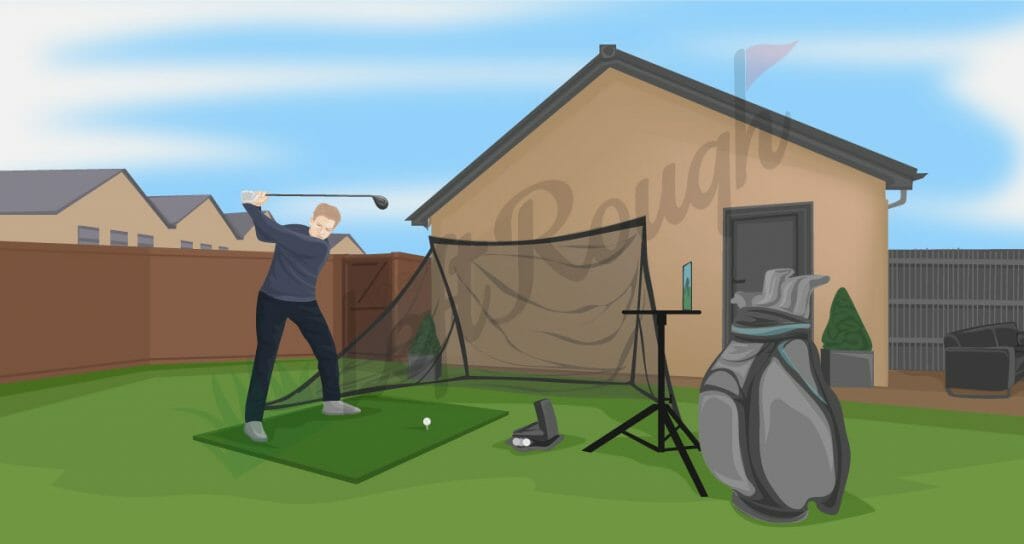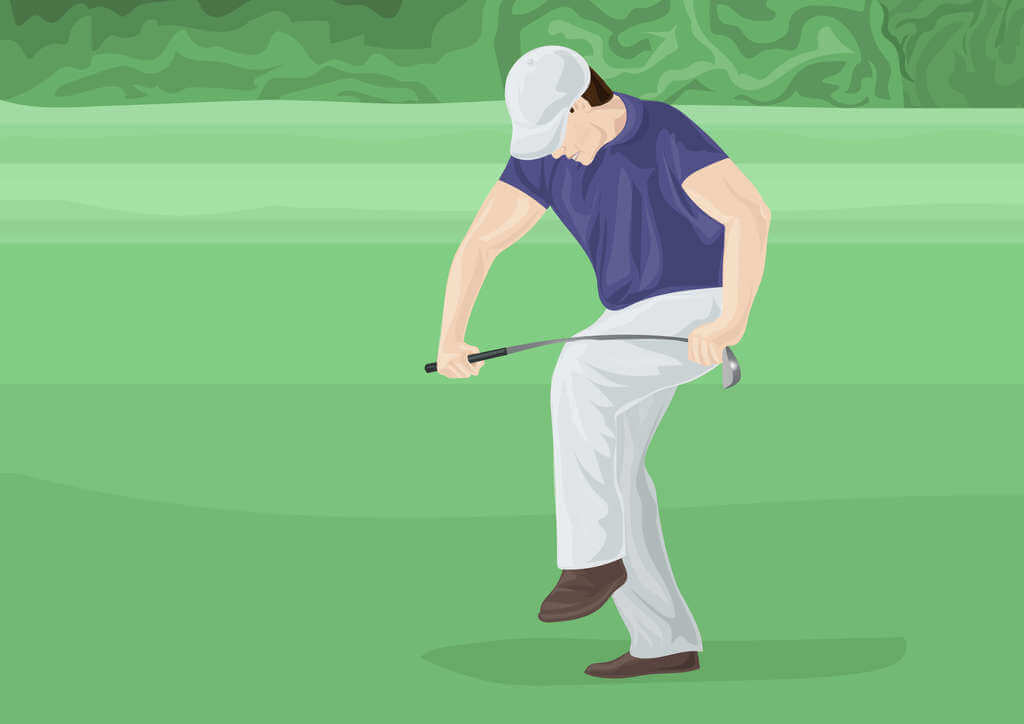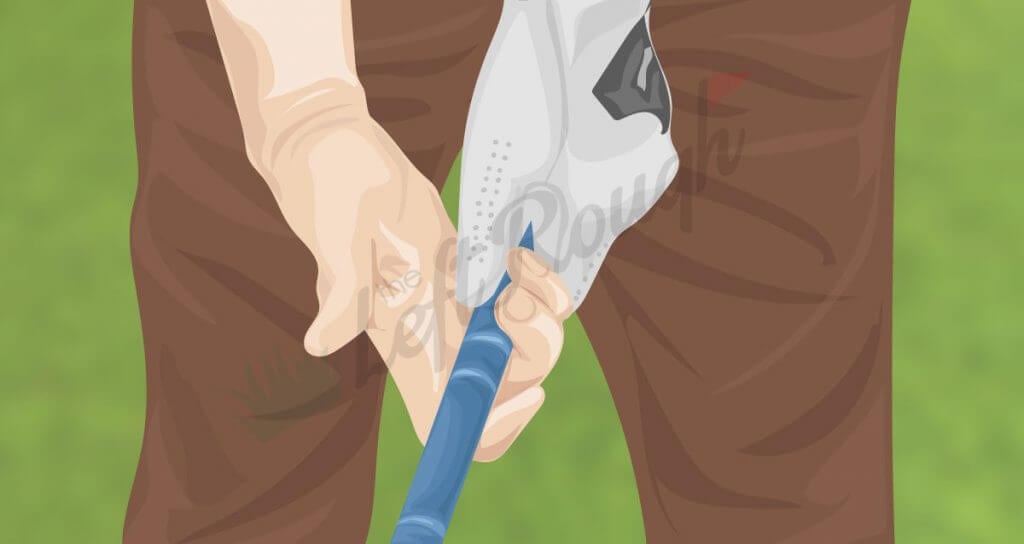Are you finally getting back to golf after a long absence?
Maybe you had children, went through a long offseason, or took a long vacation after an injury. Anytime you return to golf from an extended break, you are probably feeling two things — Anxiety and excitement. Both emotions are normal as the game never seems easier.
There are no guarantees about what your game will look like after a break or the end of golf season. You might have been playing well before your break and believe it will be the same. You might be having trouble with your game, and you think that a long break may have made it worse.
In either case, playing golf after a long break doesn’t have to be intimidating or scary.
Golf is still a game. It should be fun. These are some tips to help you have fun while playing golf after a long break.
Preparation begins at home
When you’re returning to golf after a layoff you can actually start the process by preparing at home.
How?
Most people only think about the short game, swing, chipping, and putting when they think of golf. In reality, your golf score depends on more than your swing. your mind. As Bobby Jones said, “Golf is a game that is played on a five-inch course — the distance between your ears.”
Your mental game, and your attitude can make a difference in your game. Take your golf tips magazines out of your hands and read about the mental side to the game while you are away from the course.

Its easy to see that all the PGA tour players hit it far, make putts, and flush irons. The winners are those who make the most of their opportunities. Persist During the week, mentally and physically
The winners are mentally strong so they don’t crumble on Sunday afternoon. After a long break from the game, the same holds true for your game.
Instead of reading another magazine promising six ways to stop your slice, get a book about the mental side of golf. Some of the best I’ve read have been from world-renowned, sports psychologist Dr. Bob Rotella:
- How Champions Think
- Golf is not a game of perfection
- Putting out of your mind
- Golf is a game of confidence
If you’re not a big reader even watching golf can help your game after taking a long break.
What You Can Learn From Watching Golf
No matter what you do, you can enjoy the Masters, any other Majors or any PGA tourThese players can teach you a lot. Here are some tips from the best golfers around to help you get back into the game.
Understanding the Pre-Shot Routine
Your best friend on the golf course is your pre-shot routine. A good pre-shot routine will help calm nerves so you can hit better shots even when under pressure. The problem is that most players don’t have a pre-shot routine.
Watch the best players in the game and youll be impressed at how consistent they are with their routine. Take a look at them and think about how you would approach your pre-shot routine. Find a way to take their routine and make it your own when you return to the game of golf.

Learn how to manage your emotions
Sergio Garcia, a former Masters champ, knows that golf is difficult. He made a 13 at Masters in the year he tried to defend his title. Yet, he didn’t show an ounce of anger and aggression, which is the typical Sergio response. Yes, he does sometimes get mad at other players for a shot. It could be a casual club throw or a few words. What makes them different from average players is their ability to bounce back after a bad shot.
If you dwell on a bad shot you’re only hurting your chances on the next shot.You are cursing the rest. You can see how the majority PGA tour players manage emotions. Whether it’s an eagle or a double bogey you often can’t tell the difference. Your scores will drop the more even you can be.
Practice Your Swing Indoors
Another reason PGA Tour golfers are so consistent is because of their ability to trust their swing. You rarely see elite players thinking about mechanics during a tournament. They know how to train their swing so it is easy to trust. These simple drills will help you build trust in your swing.
1) Perfect Your Grip
As Ben Hogan said, “Good grip is key to playing good golf.” While watching golf, have a club near you to constantly work on perfecting your grip. Try to match the grip pressure of a player when they hit a particular shot.

For example, if a club player is too short-sided to the bunker, imagine a light grip. Imagine a player lying in the deep rough gripping the club more firmly to ensure that the hossle does not come close to the face at impact.
If you are looking to refresh the basics, we have a great primer for grip.
2) Practice Addressing the Golf Ball
While it’s easy to assume your swing is the reason the ball didn’t do what you want, often times it’s your alignment. Your setup can have a significant impact on the outcome of your shot.
With the perfect grip, imagine addressing the ball so it won’t feel foreign when you get back to golf. Start by placing the club head straight towards your target, then move on to your shoulders, hips and then feet. You can also do it in this order.
2) Rehearse two important swing positions
Takeaway is the best place to start. (Your next read should include our Article about Takeaway.)
Your swing path is often determined primarily by the first section of the swing. After you have improved your grip and stance work, try to get the club back on the plane. You should aim to hold the position for at least 5-10 seconds. To infuse the feeling, repeat this 5-10 times.

Practice slow motion swings and practice your impact position. For maximum power, your hands should be in front of the golf ball. Imagine swinging the ball with precision and speed. You must also stick to the finish.
How to Get Your Golf Game Back after a Break
A few things will happen after a long break from the game of golf.
- Your touch on the green will be lost almost all the time. You might feel off your first swing. Instead of going straight to the range, you should start with your shorter game. Your short game will only contain 50-70%, but it is the most commonly practiced.
- Youll be rusty with your Full Swing Fundamentals. We will concentrate on the basics.
How to get your short game back after a break
The Basic Chip Shot
Although everyone wants to hit epic flop shots such as Phil Mickelsons, you might only need to do it once per round. Instead of practicing something that doesn’t happen often, spend your time working on the basic chip shot.
A basic, standard chip shot is the best shot. Your scores will immediately improve if you can hit a ball 3-4 paces from the green and let it roll to the hole.
Try several clubs, including a PWedge and an 8. Iron, and see how they react on the greens. Try to get as many clubs as you can within a 3-foot circle.
The Basic Pitch Shot
While I still think it’s a good idea to avoid hitting flop shots after a layoff, you will definitely have situations where you must hit a pitch shot. When just coming back to the game, I encourage you to use a chip or bump & run shot wherever possible but that is not always possible.
This shot should be 25% of your practice time. Keep your eyes on the ball and make good contact. Nothing can ruin a great hole as a bad pitch shot or a missed one.
Stop Fearing Sand
Amateurs are afraid of the sand, while pros love the chance for a good bunker shot. Why are bunker shots so different for pros and amateurs? Because they have never used it, the majority of players are afraid of the sandy stuff. Spend some time in the sand to get over your fear.
Phil Mickelson has a great video that explains how the average bunker shot measures 10 yards. This drill will help you to focus on this distance.
Sand Drill
Start practicing with 10 balls for your sand wedge. Then, see how many you can reach within 10 feet. Next, you can beat yourself until 6 of 10 balls are left. If you find this too difficult, you can try to keep the balls within a 5-foot circle.
How to get your golf swing back after a break
Once you’ve worked on your short game, now you can head to the range. If it’s been a long break from golf ease your way into it, there is no need to be a hero on the first day. Start with a small bucket. Then, focus on quality shots rather than rifling through a large bucket.
Start your warm-up by stretching and practicing controlled swings. Getting back into golf will use some muscle you probably haven’t used in a while. You should let go of the ball and be open to new ideas. Start your range session by using wedges, and gradually work your way up to driving the driver.
Assuming you’ve worked on the at-home drills for your swing, spend time working on these two checkpoints at the range when getting back to golf after a long break:
Get Square at Target
No matter if youre a professional or a 30 handicapper, alignment sticks are vital to ensure youre aiming at the target. If your aim is off it’s hard to tell if it’s your swing or alignment that makes the ball go off course. Use Alignment sticksYou can use the clubs (or feet) to ensure your feet, hips, shoulders, and hips are straight at the target.
Focus on smooth Tempo
After a long break, your tempo may take time to adjust when you return to golf. You should concentrate on bringing the club back smoothly, setting the club at its highest point, and then accelerating through the golf ball.
Focus on your swing, your tempo and your acceptance of any results. It is not easy to get back into the game of golf. Have fun and enjoy your time on the course. You will have more fun playing golf if you have fewer expectations.
Returning to Golf: Your First Round Back
The day has finally arrived, it’s time to return to the links!
It is exciting to be back after a long absence, but it can also be nerve-racking. Your mind will race with thoughts of what if I miss my first tee shot? What will my friends think? And many other thoughts. After a long break, these golf tips can help calm your nerves about the first tee.
Get there early
If you haven’t played for an extended period of time you need to get to the course early — don’t be rushed! It is not worth parking, checking in, then having to tee off cold after taking a break. You should arrive at least an hour early so you have enough time to check in, warm up, and be ready for the first tee shot.
The Short Game is the Most Important
Your short game is the first part of your game that you will be able to play after a long break. Begin your warm-up by going to a putting green and getting familiar with the greens. To increase your confidence, you should aim to hole at least 20 putts. You can work your way up to longer putts by putting 30- 50 footers. You will be amazed at how close you are able to get three or four balls from a longer distance.
After putting, hit some basic pitches and chips around the green. Spend some time if they have bunkers. If you find yourself in a bunker, get a feel for the type and texture of the sand.

Warm up to the Range
Once you’ve worked on your short game it’s time to head to the range. Stretch well and start with short wedges with 50% swing speed. Warm up with more full wedges and irons, woods, or drivers. To give yourself confidence, make your last shot the club you will use at the first tee.
Most Important…. Have Fun
These tips should make it easy for you to return to the game of golf.
Spend some time working on your short game. Focus on smooth swinging and having fun out on the course. Its all about having fun when you get back into golf.
Do not expect to play your first round of golf after a long break. Remember that the game is difficult even for those who play every day. Don’t expect yourself to go out on the first round and shoot a career round.
Have fun and enjoy your time on the course. Relaxed attitude can help you hit some of your best shots.
